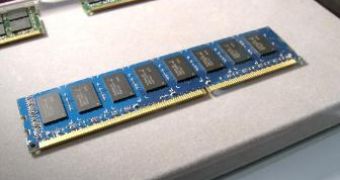The third quarter of this year seems to have ended under a dark cloud for Taiwan DRAM makers, which are expected to announce vast losses for the time frame. The Powerchip Semiconductor Corporation (PSC) and Nanya Technology are said to have sustained losses of more than $307.7 million, while ProMOS Technologies is reported to have registered great losses as well, says Economic Daily News.
PSC registered losses during the first and the second quarter of the year as well, and the third one is expected to mark record quarterly losses. The company should reveal the third quarter results at a conference with investors on October 21. Nanya Technology will announce the results on a conference set for October 22 and is also expected to make public record losses for the quarter. ProMOS is said to be rather silent lately and that it will not hold a conference with its investor, but the company is also registering losses for the third consecutive quarter.
On other news, the Taiwan DRAM maker Nanya Technology has been reported to reduce the output at its 8-inch fab. The company will turn down orders that bring small profits, since the demand is weak and competition seems rather keen. Also, the maker will postpone expansion projects for its 12-inch fab.
According to Pei-lin Pai, spokesperson and vice president of global sales and marketing at Nanya, the orders the maker received for the 8-inch fab are currently sufficient, but the fab's capacity has not been fully booked. Nanya's 12-inch fab can make 60,000 wafer starts a month, yet it is outputting only 30,000 wafers on a 70nm process node based on Qimonda technology.
The maker had planned to use a 68nm process from Micron Technology for the rest of the 30,000 wafer starts, and also to convert the first-phase capacity to the same node after mid 2009. According to sources from the company, the plan changed to converting the first-phase capacity of 30,000 wafers to the 68nm node by the end of 2008, while the second-phase expansion was postponed.

 14 DAY TRIAL //
14 DAY TRIAL //